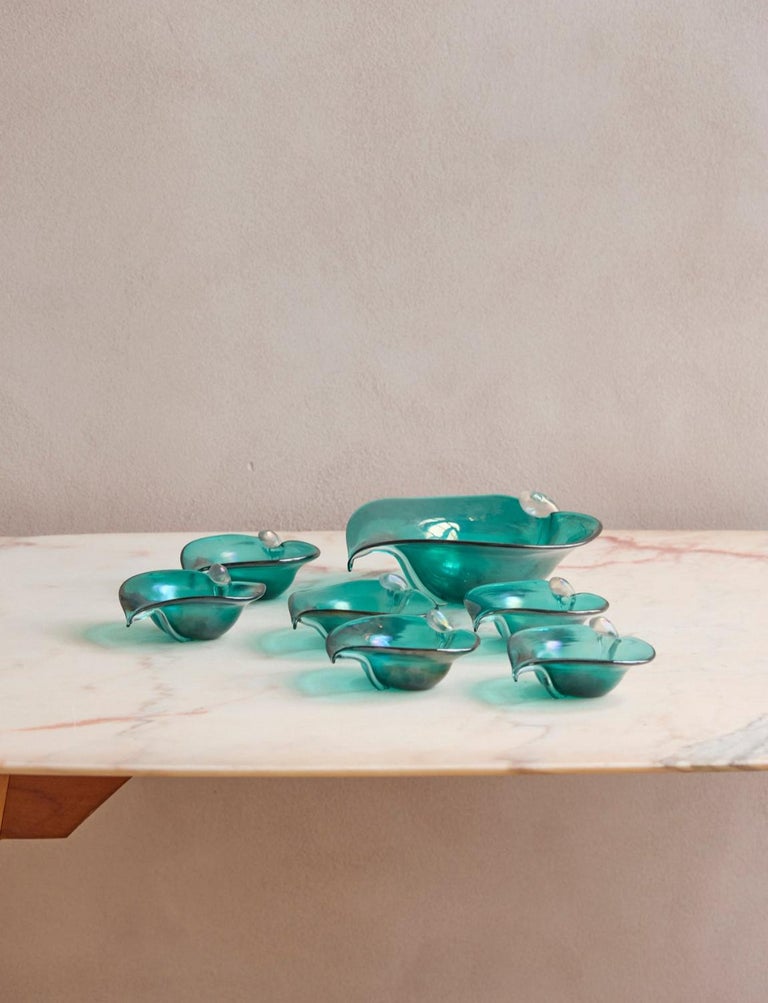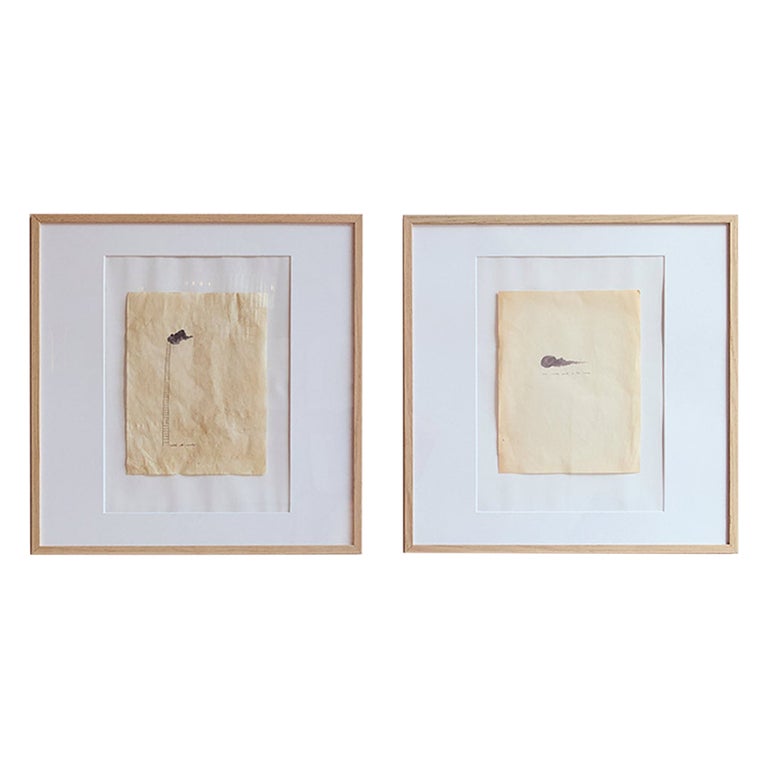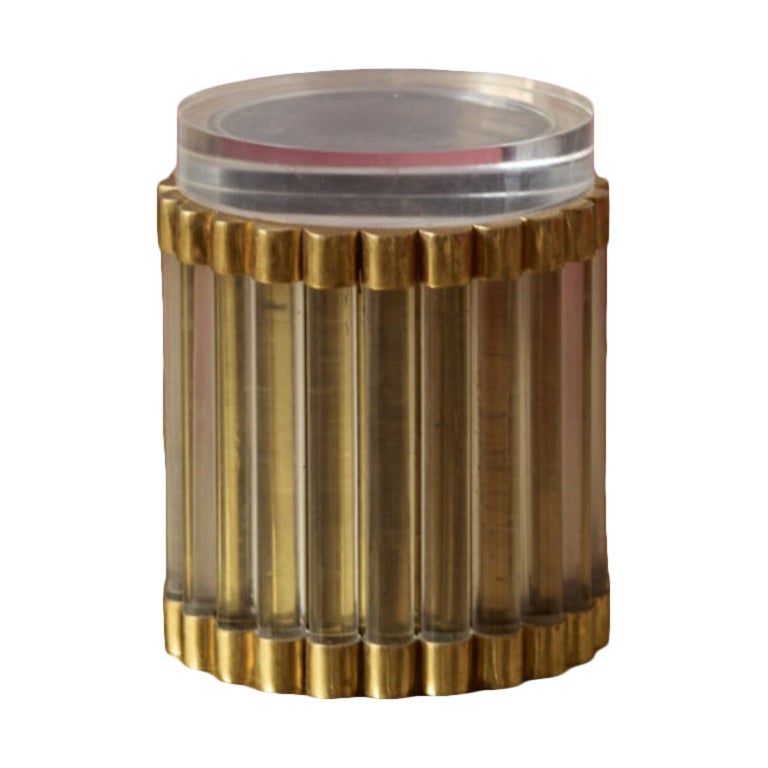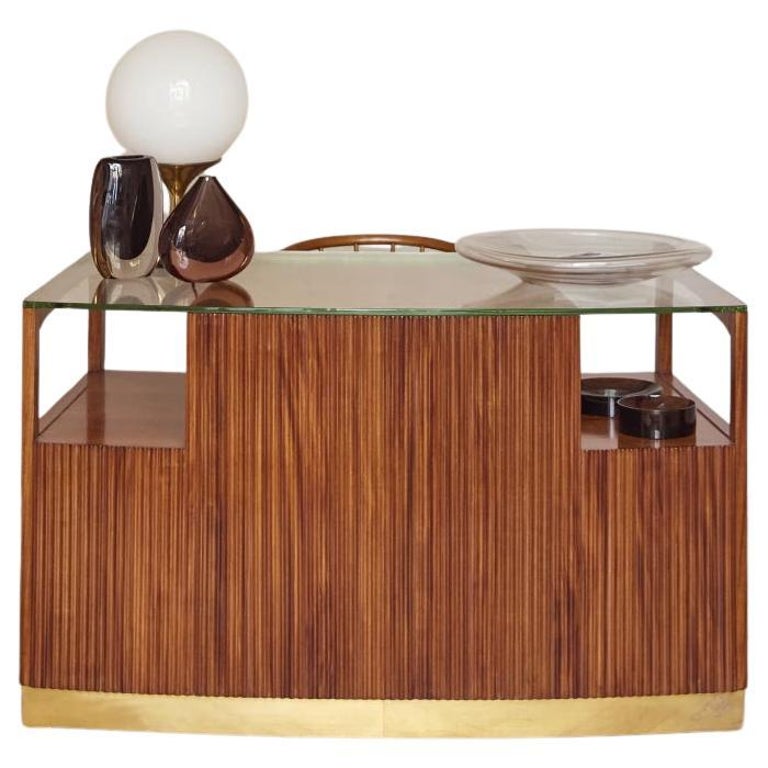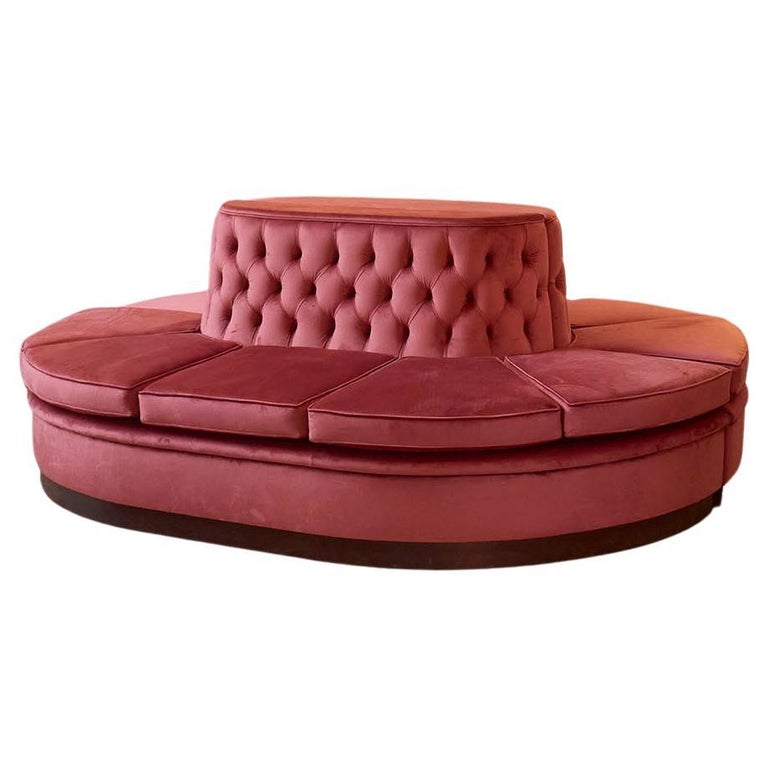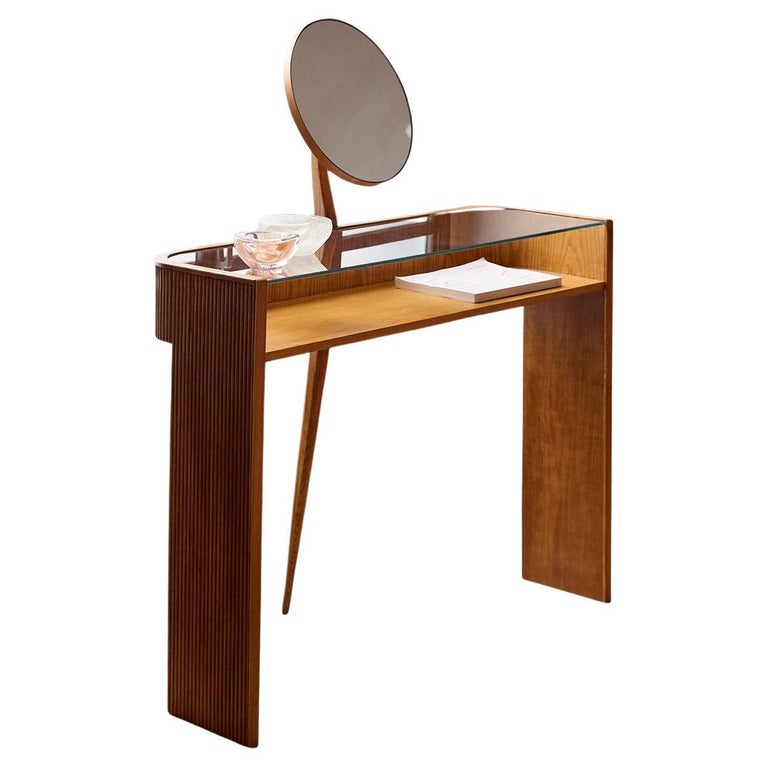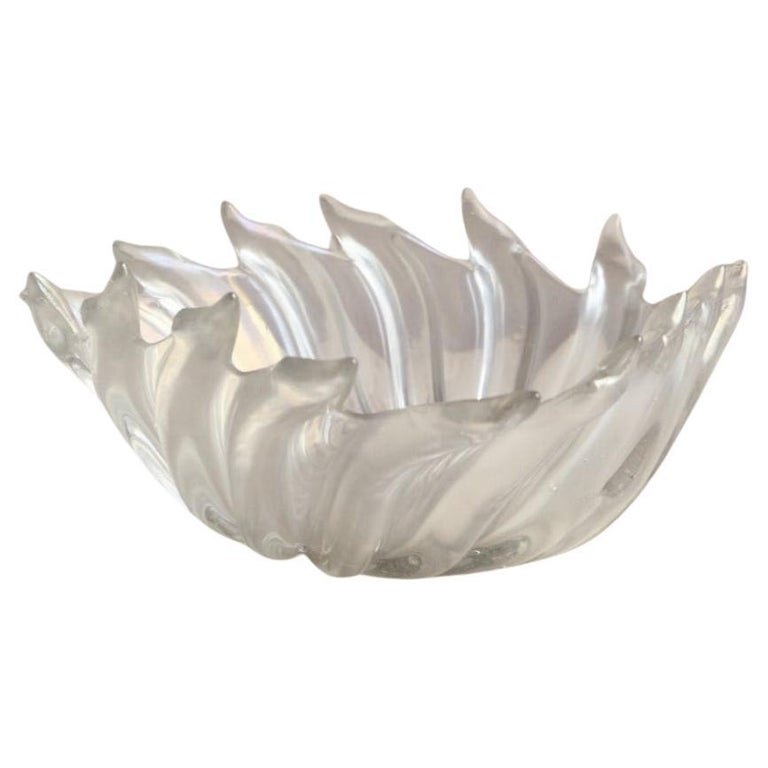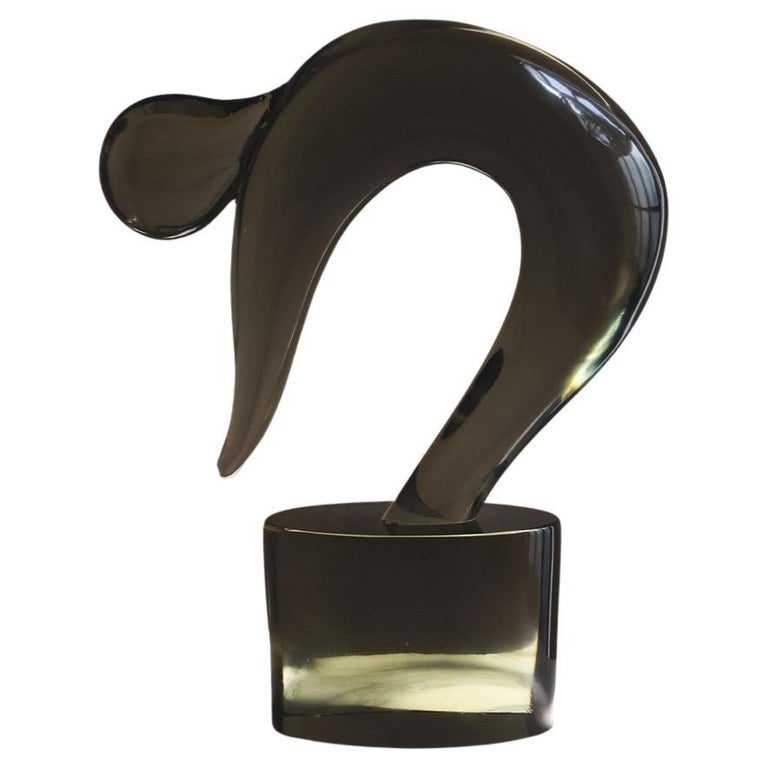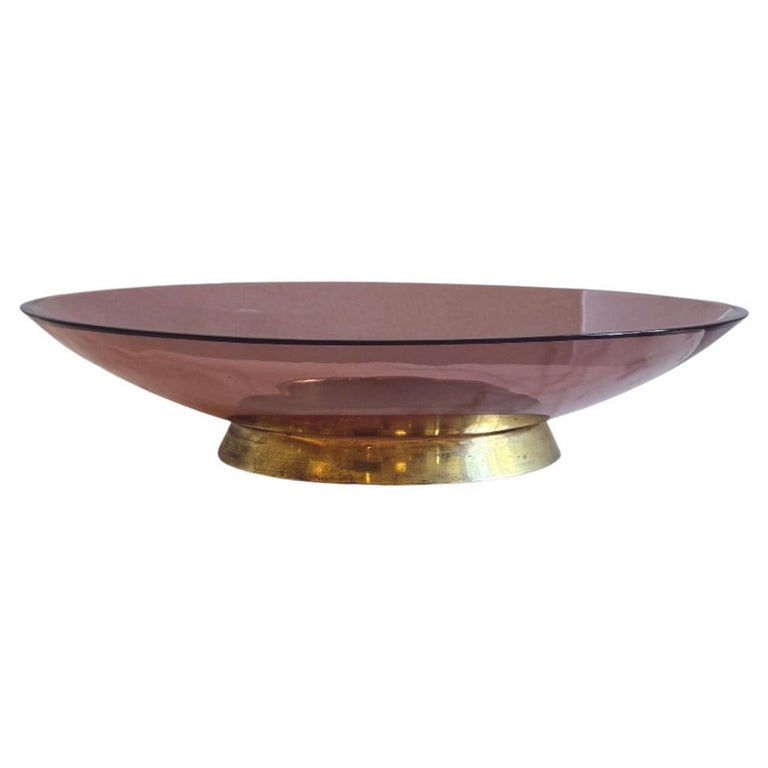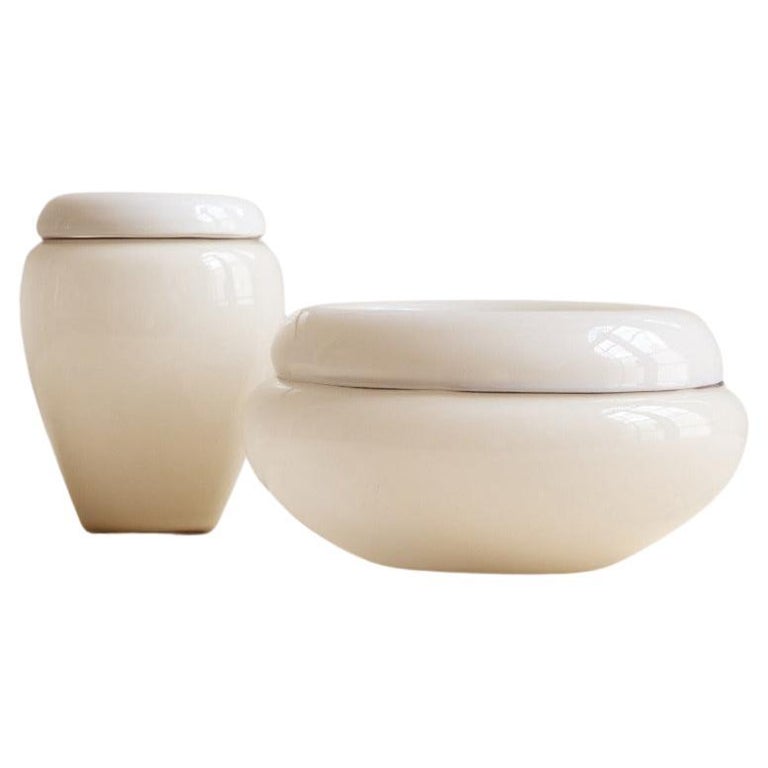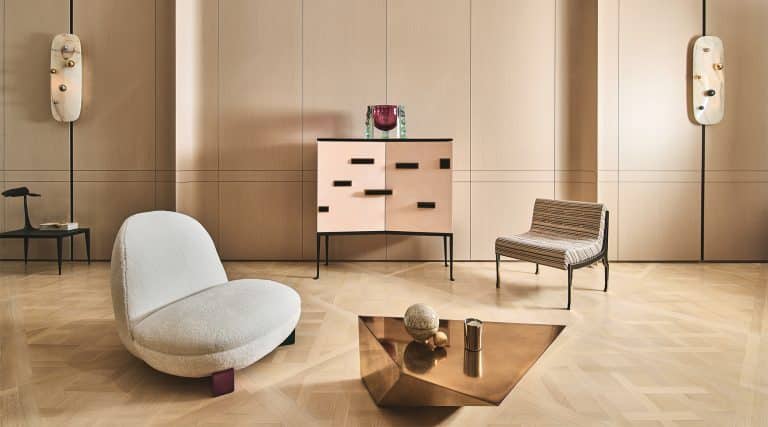October 26, 2025About 10 years ago, London-born and -bred entrepreneur Bec Astley Clarke stepped back from running the daily operations of the thriving online jewelry marketplace she’d started in 2006 and did something many lifelong urban dwellers have long fantasized about.
She and her husband, together with their young children, left the bustling British capital and moved to the quiet hills of the Italian countryside. “We had this idea of a rural idyll, where we’d live in the middle of Umbria and grow tomatoes and raise our children. And we did it, and it was fantastic, and it remains fantastic,” says Clarke, who bought and restored a 19th-century hilltop farmhouse she still calls home.
Days spent planting vegetables and playing in the olive groves suited her quite nicely, but eventually her entrepreneurial and aesthetic antennae became attuned to another possibility.
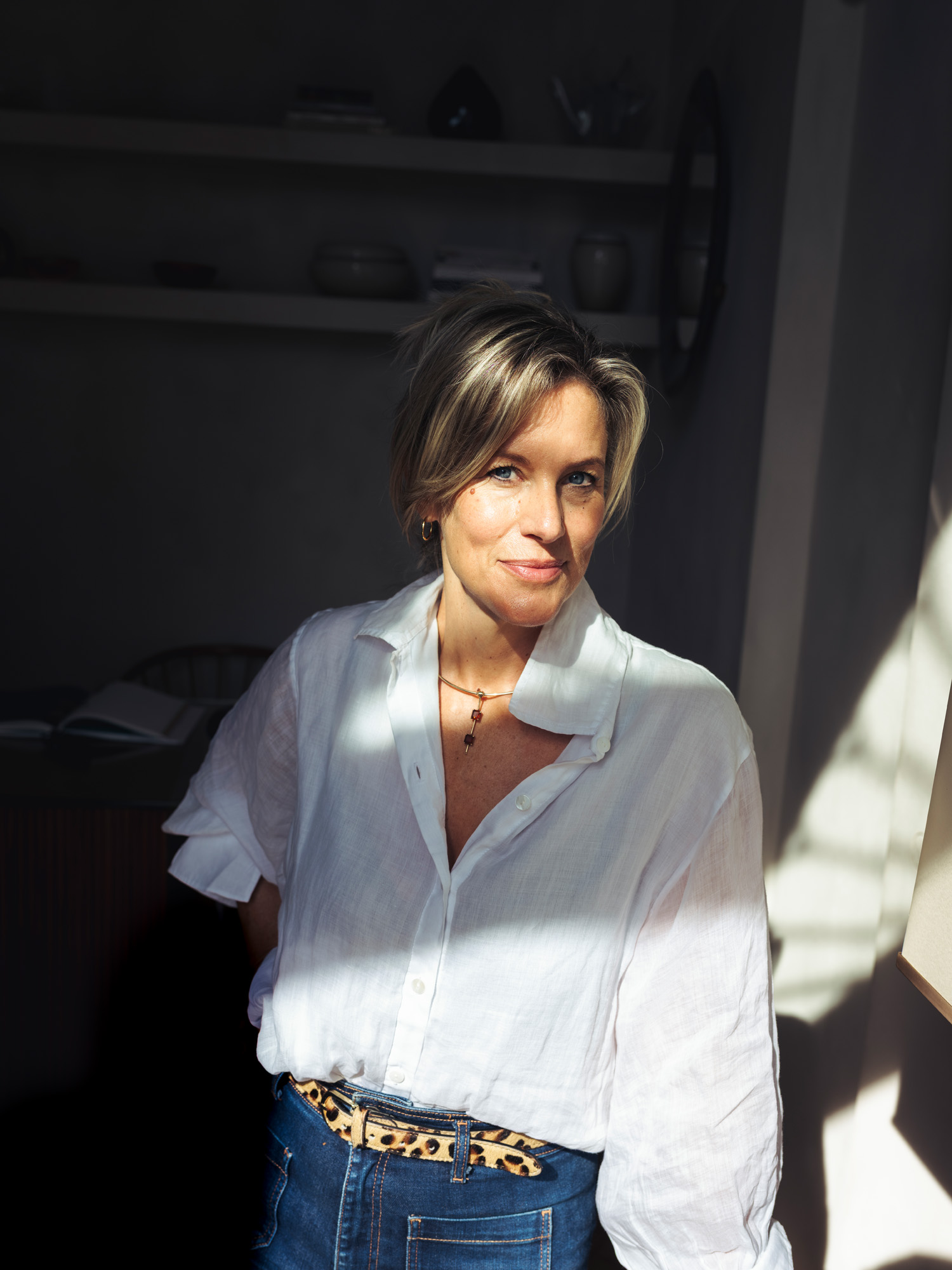
“I started coming across all these amazing pieces,” she recalls, still awed by the mid-century Murano glassware, the massive terracotta urns and the vintage ceramics she found at local markets and estate sales. “They were just completely exquisite, things that you wouldn’t find in the UK — beautifully designed, beautiful colors, lots of history.
“And there is such a rich history here, you just can’t believe the pieces that people don’t want but the rest of the world does,” Clarke marvels. “ ‘Why in the world would you want that?’ ” Italians say. “ ‘My nonna had one of those.’ ”
And so, slowly at first and then more quickly, she began to buy the things she loved — and then to find buyers for those with which she could bear to part. She became, not quite by accident but almost, an antiques dealer, and thus her next venture, The Italian Collector, was born.
Last autumn — after dealing in these fabulous finds for four years, largely through her 1stDibs storefront — she opened up shop in an 18th-century palazzo in Florence’s arty Oltrarno district. And now, she’s just launched a new exhibition of highly covetable furniture, objects and art.
Among the most tempting? A sleekly curvaceous glass-topped rosewood desk by Paolo Buffa from the 1950s; a suite of six leaf-shaped Murano-glass vessels by Alfredo Barbini; and a suite of six never-before-sold and highly personal signed sketches by no less a mid-century Italian eminence than Gio Ponti.


Although most of Clarke’s wares can trace their origins to the middle of the last century, her collecting hardly ends there. On her 1stDibs storefront — and amid the plastered walls and reclaimed herringbone wood floors of her sun-filled shop — you’ll also find older treasures aplenty, including hand-painted blue-and-white porcelain made in southern Italy’s Puglia region in the 1800s and carved travertine architectural elements whose creation dates back even further (here a set of plinths from Sicily, there a pair of Decorative Travertine MANTLES salvaged from a church in Le Marche).
Clarke describes herself as driven by the pursuit of beauty, and a desire to follow her own evolving aesthetic passions, rather than by a need to establish a niche in a particular period or style or genre of design. “It’s about the curation,” she says. “I’m not interested in running a big antiques business. I’m interested in collecting the most beautiful pieces. Other things come into play, of course, like provenance and craftsmanship. But if something is truly beautiful, it’s going to stand the test of time. Those are the pieces that survive, because everyone loves them and looks after them.”
Here, Clarke talks with 1stDibs about her pursuit of beauty, the journey it has taken her on so far and where she expects it to bring her next.
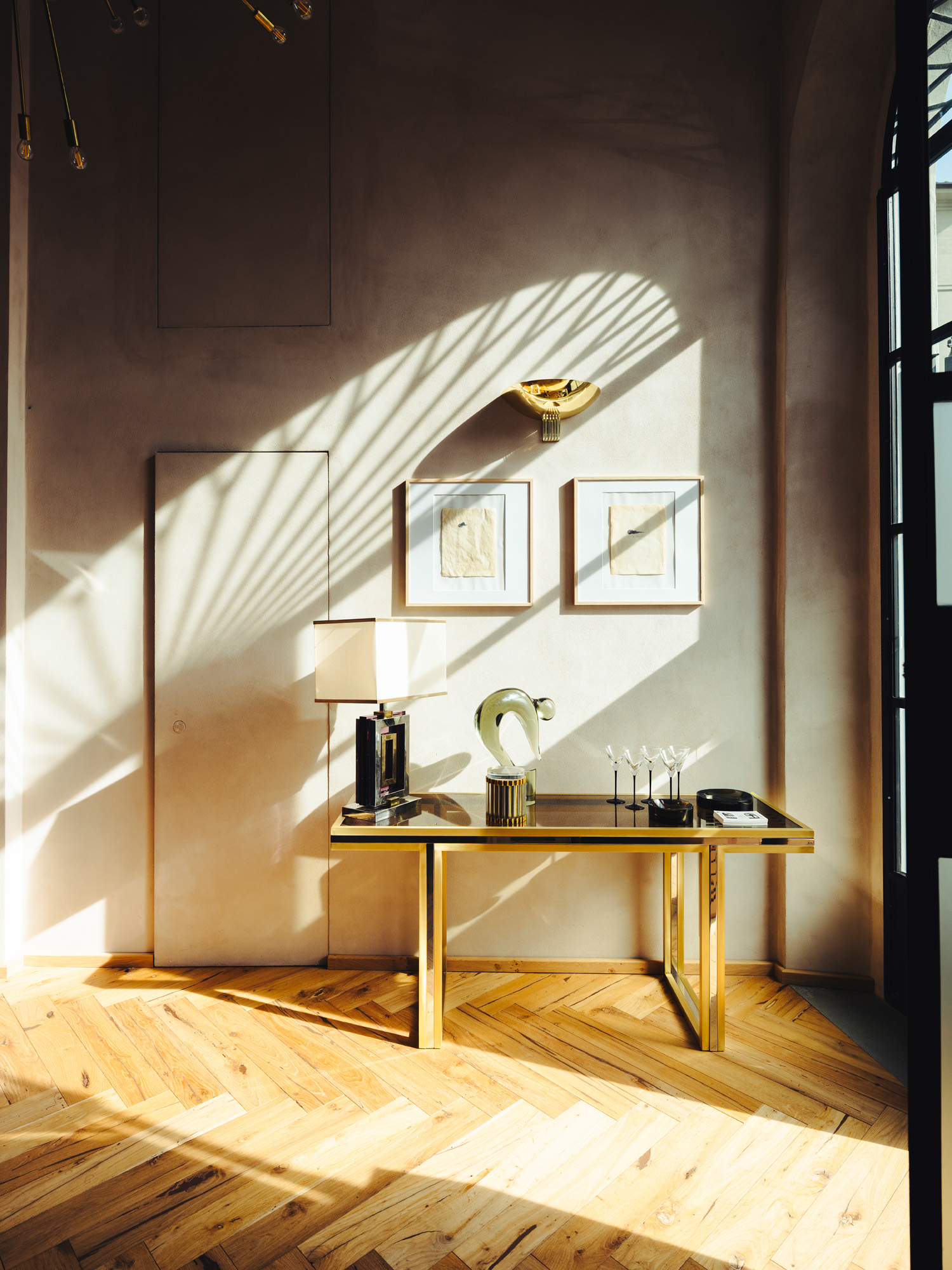
What led you to antiques, and to start The Italian Collector?
My background had been in retail and online from when I had this big-ish jewelry business in the UK, and I just couldn’t help myself after we moved here. But this time round the block, my goal was to discover beautiful things, not to make anything new. I think we’re all pretty certain that the planet is too full now of new stuff, so I’m very happy, in later life, to be discovering things rather than manufacturing them.
What were some of the early pieces you acquired, and where did you find them?
There were some orci, big terracotta urns used to store olive oil, with amazing patina. Everyone wants those in their country villas, but finding a good one is difficult. They’re hundreds of years old.
There were definitely Murano-glass bowls and vases — you just don’t get the same colors today. There’s something in the blends from the nineteen fifties and sixties that you don’t find now.
In an old restaurant, I found some amazing ceramic apothecary jars. And there were flea markets, and people who were closing down or selling a palazzo. Since living here, I’ve bought pieces from cinemas, from bars, from hospitals, from building sites, anywhere people are getting rid of things.
Now, it’s a bit different because people know I’m buying, so there’s a network of people who want to send me stuff. But I still go to markets and auctions, because in this trade, it’s about finding one amazing piece.
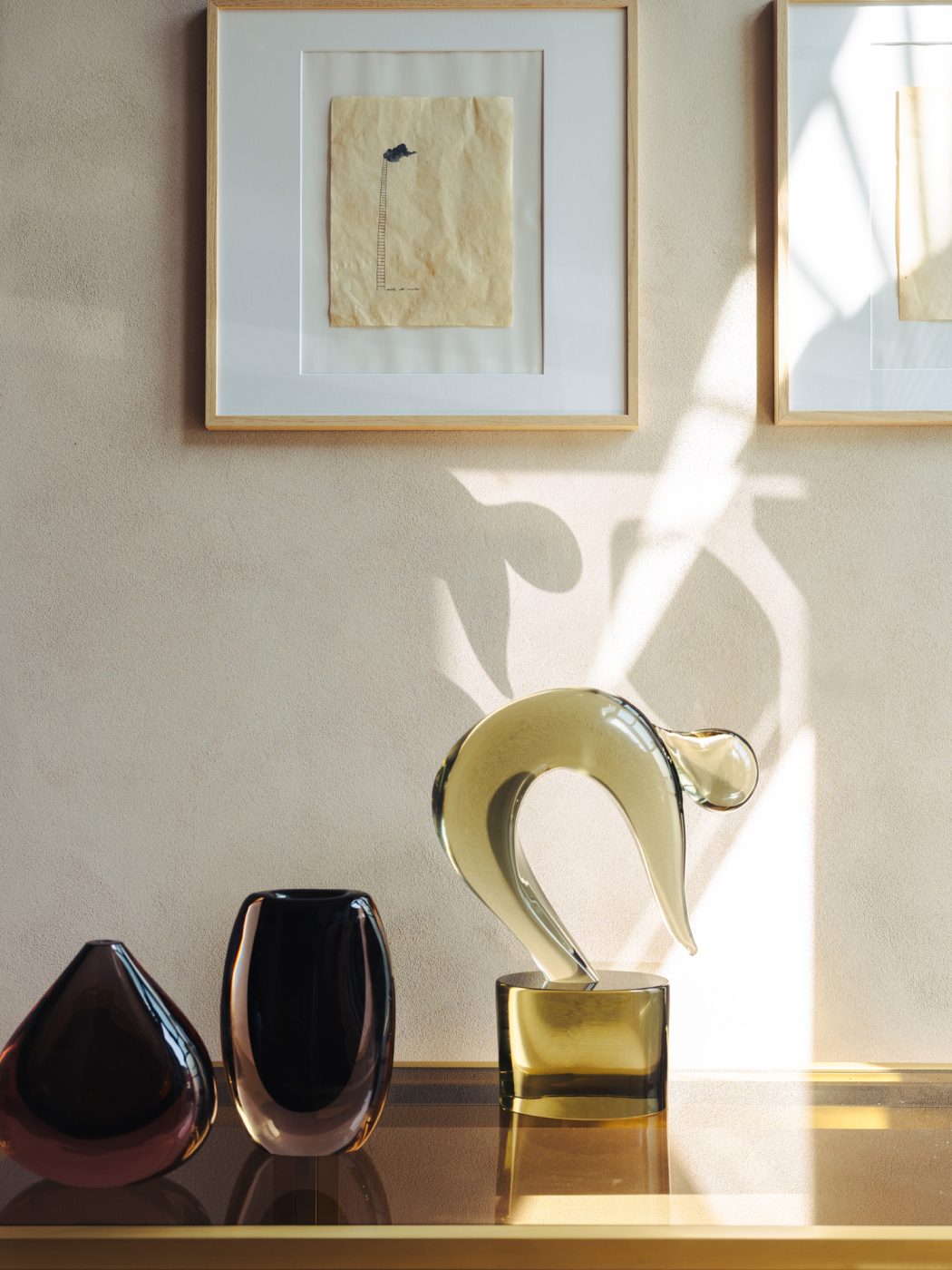

You developed an early focus on Murano, it seems. Why do you find it so appealing?
I don’t know why exactly, but I’m definitely drawn to the color, as I was with jewelry. I have an amazing Seguso turquoise Murano vase going to a client in New York — it weighs seven or eight kilos — and a large CEnterpiece Bowl that’s by Max Ingrand for Fontana Arte, plus another bowl in a particular peach hue that just won’t come back.
My grandmother collected some amazing Murano pieces, and so I grew up around that, too.
I understand that you have something of a family connection to Italy.
My grandparents were great friends with an Italian family, and I’m the third generation of that friendship. We were here a lot as children, hence why I ultimately wanted to move here.
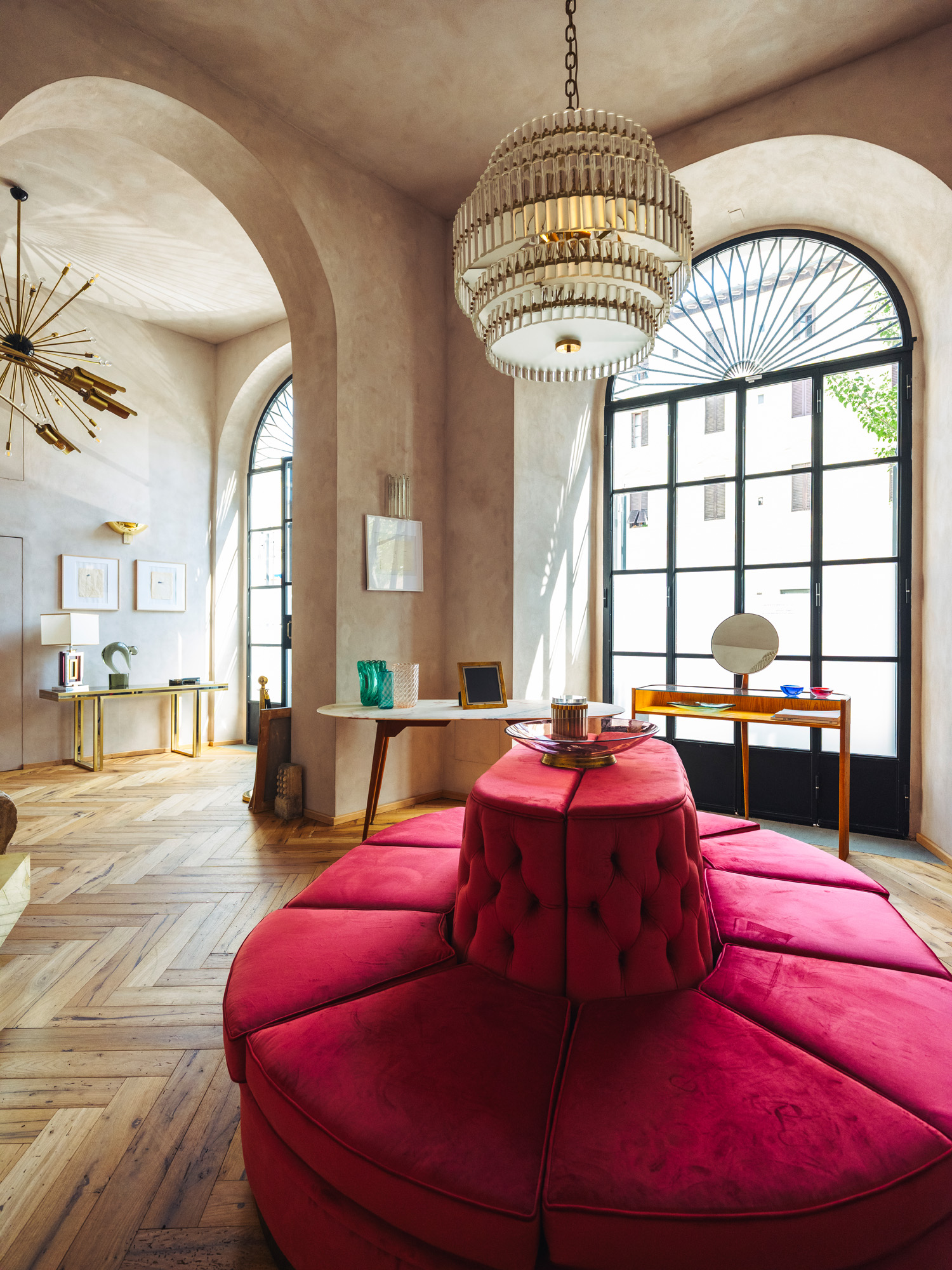
From Murano your focus expanded, but also concentrated, at least a bit, on mid-century pieces.
As you get into this sort of business, your tastes evolve. You learn more and get interested in different directions on the journey. At the moment, I’m certainly interested in mid-century pieces, but also at times I’ve been interested in eighteenth-century passata bowls or those orci.
So, it depends on what sort of journey I’m on — whether I’m in a car in Naples and find an amazing sofa, or at an auction in Milan and I find these amazing Gucci glasses from the nineteen seventies.
I also have this mid-century chandelier that came from a restaurant in Padua. They were going to close down, and a year later they sold it to me. It was in four hundred little pieces. Amazing, but horrible to put up in the shop.
What are the advantages of being based where you are?
There’s something really interesting about being here. Six months ago, someone said to me, “Did you know that Caterina, Gio Ponti’s great-granddaughter, lives just around the corner?” So, she came round, and now I have these amazing Gio Ponti sketches. There’s a whole series of them. He did a lot that were correspondence: a little Christmas card to his wife, a line drawing to his granddaughter. They’re completely fantastic. And had I not moved to Florence, that interaction would never have happened.
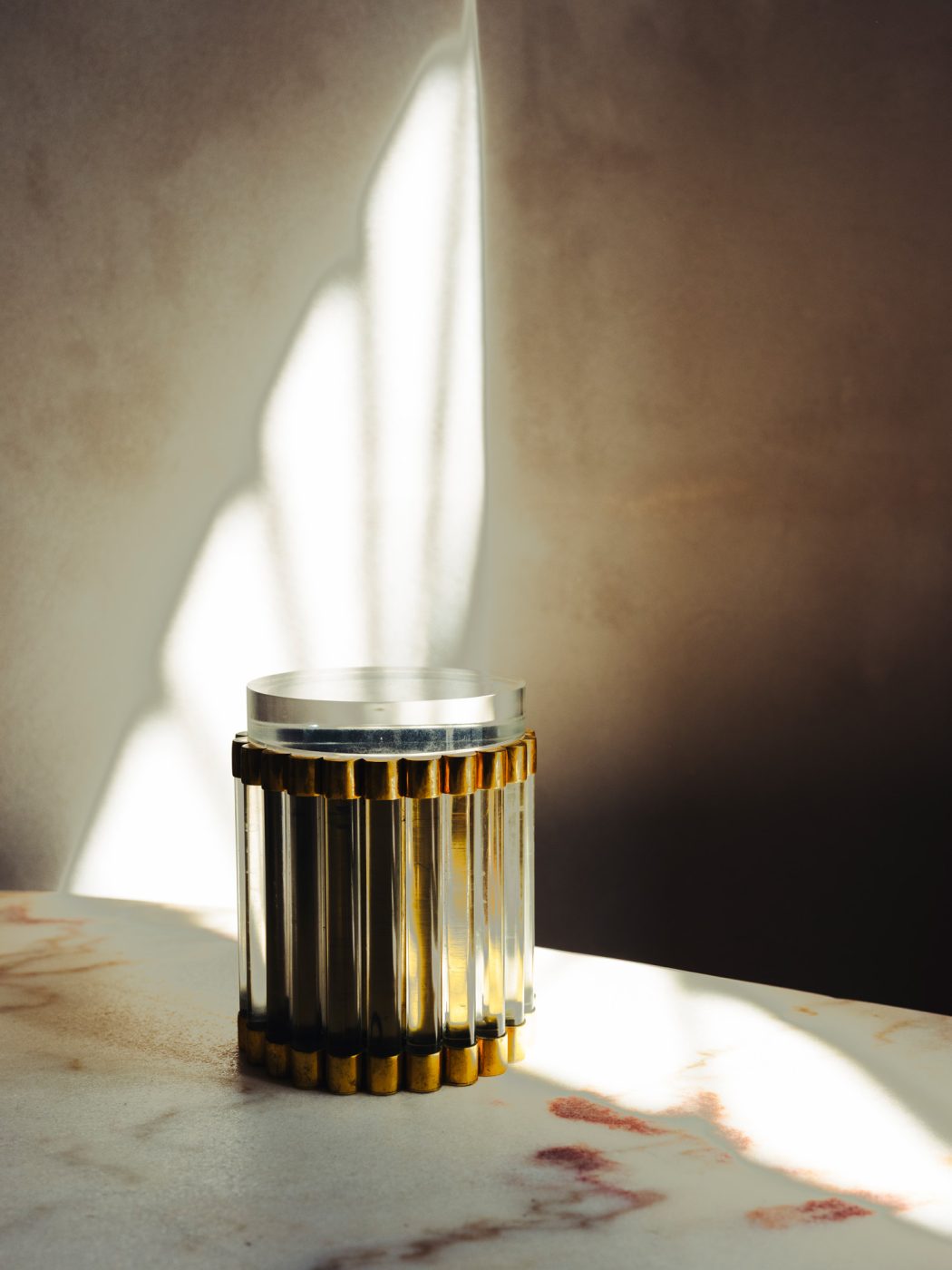
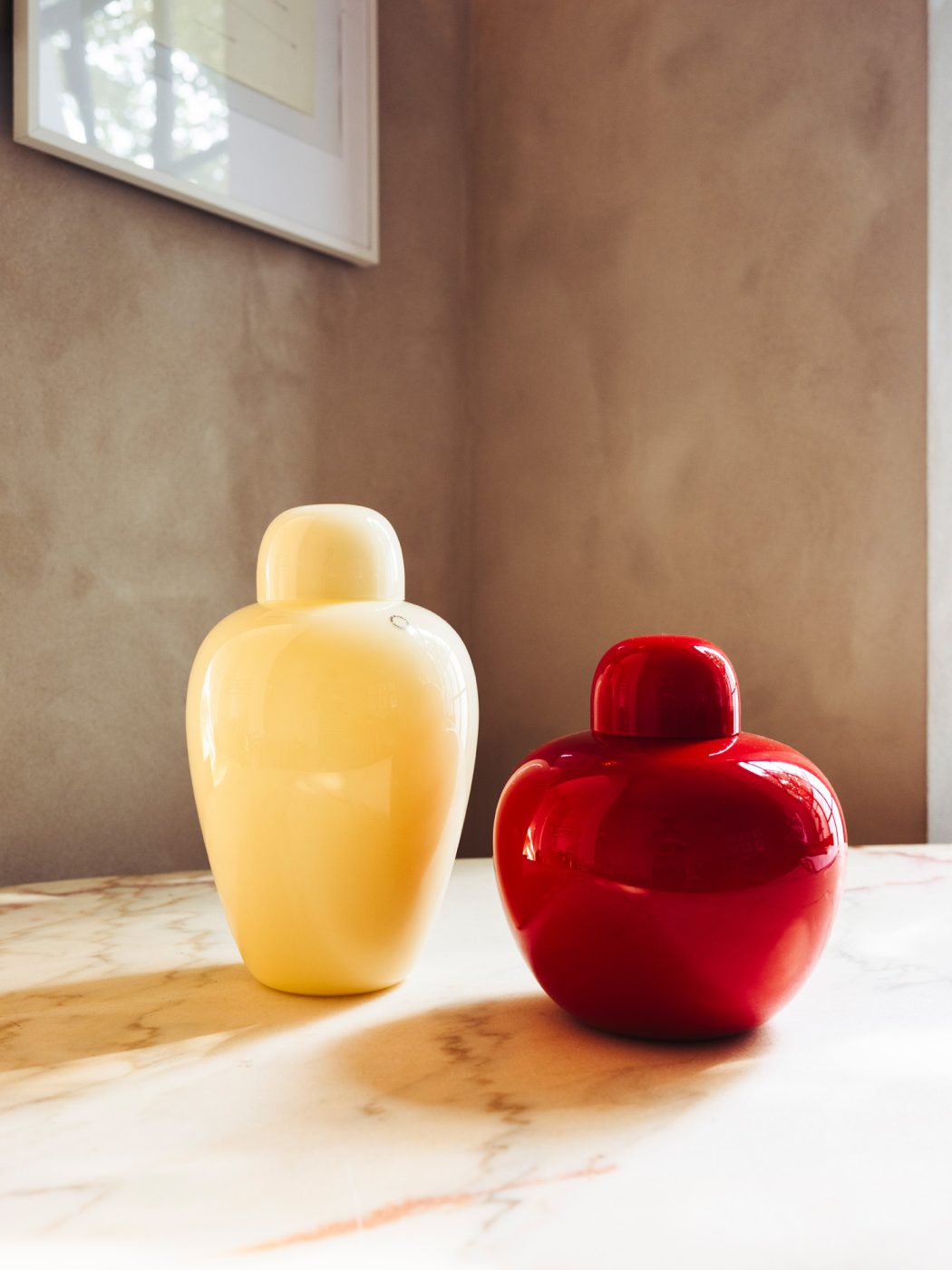
What was it that led you to Florence?
My children were at school in Umbria for eight years, and we loved it. But for the kids, we wanted something a bit more cosmopolitan, and we didn’t want our son to have a moped, so we wanted a city where you could get round on foot. Florence is very manageable in terms of size.
And then, what led you to open the bottega here?
First off, there are all these beautiful spaces in Florence. And secondly, many clients would say, “I’m coming to Italy. I’d love to visit.” And I thought I’d like to have them look at the pieces.
I was also finding larger things, like a completely amazing brass coffee table. Instead of having them sitting in a warehouse, it would be nice to display them, and nice for me to be amongst the pieces. Buyers are everywhere, and it’s nice to be with the pieces when speaking to people about them.
You’ve just debuted a new collection of recent finds. How does it reflect the evolution of your journey?
I think it’s gotten a bit more glamorous because of where I’m now based. There’s this great big button-tufted oval palazzo torta sofa we have.
The names this season have gotten a bit bigger, too. I’ve always been on the search for Romeo Rega, a Paolo Buffa vanity table, the Gio Ponti sketches, plus a fabulous plexiglass-and-brass pot by Gabriella Crespi.
I like to have a mix. I don’t just want to be in very expensive pieces. It’s nice to have a complete mix — cocktail glasses but something that’s an interesting find, and then also some of these bigger heroes.
And because the bottega is in the Oltrarno — the other side of the Arno River from Centro — which is the artisanal district, now all of sudden, I’m opposite one of the best woodworkers I’ve ever met. I have this Paolo Buffa desk. It was not in great shape when I bought it, but it was pretty beautiful. I took it across the road to him, and he completely brought it back to life.
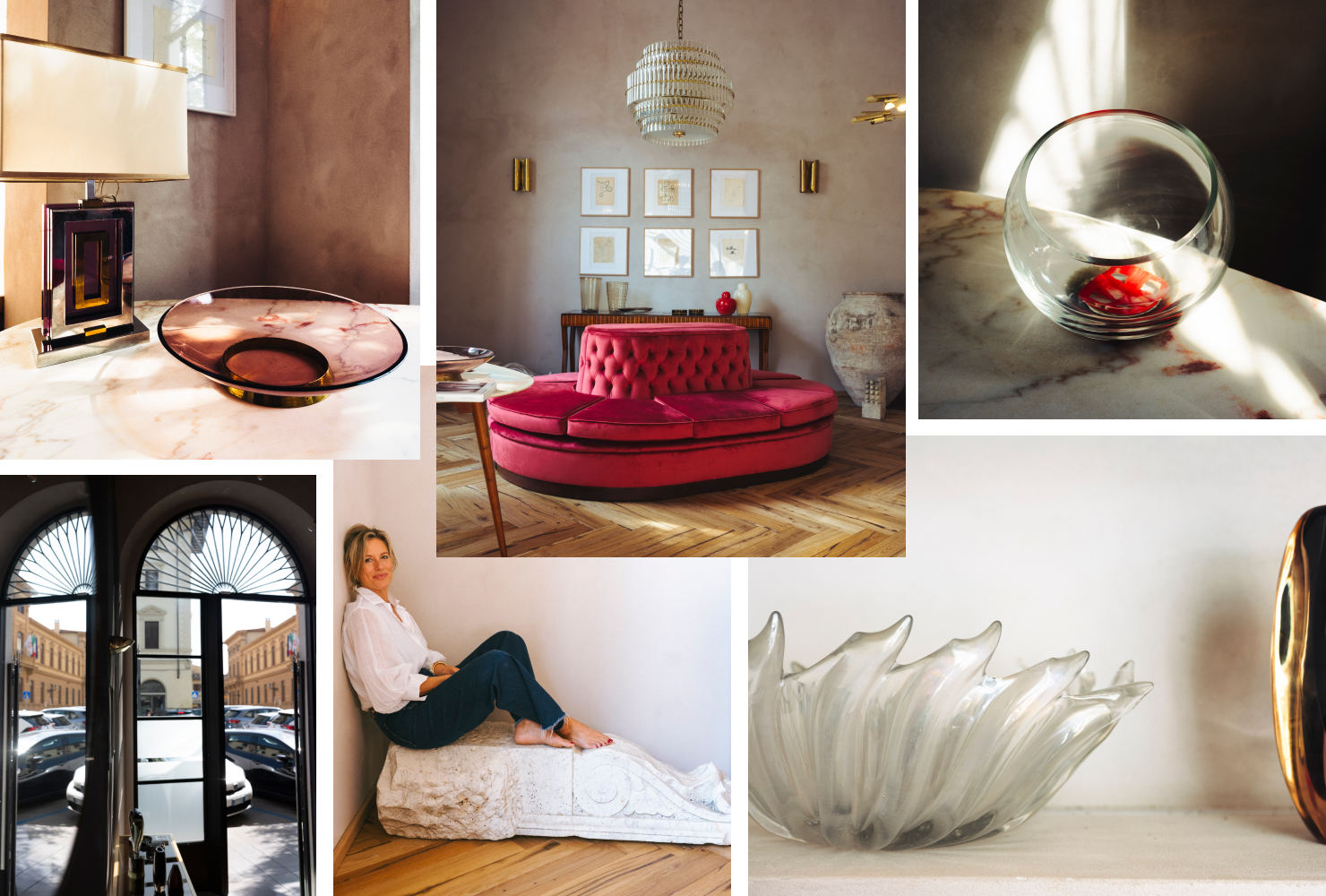
Are there any particular decades, bits of geography or makers that you focus on?
For me, it’s really about the beauty and the opportunity, and if something comes up and it’s an unmissable opportunity, I’m going to try to take it, regardless of whether it does or doesn’t “fit.”
I suppose there is an overall aesthetic to my curation that everything has to fit into, and I don’t quite know how to describe that. At least partly, I’m buying for me. I want to be thrilled if no one buys a piece. Thrilled! I was properly upset when the turquoise Seguso vase sold because I’m never going to find that again. And that’s quite a good way to work.
I often hear interior designers say that beauty goes with beauty.
I think that’s correct, that’s true. I can have this amazing orcio, and it looks fantastic with that nineteen-seventies chandelier from Padua. They’re from different centuries, different parts of the country, by different makers, but they read together.
What is your client mix, interior designers versus private collectors?
It’s mainly collectors, end clients, who are buying something for themselves. There are a few designers, including Todhunter Earle, and design houses, like Bottega Veneta. But most of my main clients are individuals who enjoy the journey. This is the fun bit of life for them. This isn’t something they want to outsource.
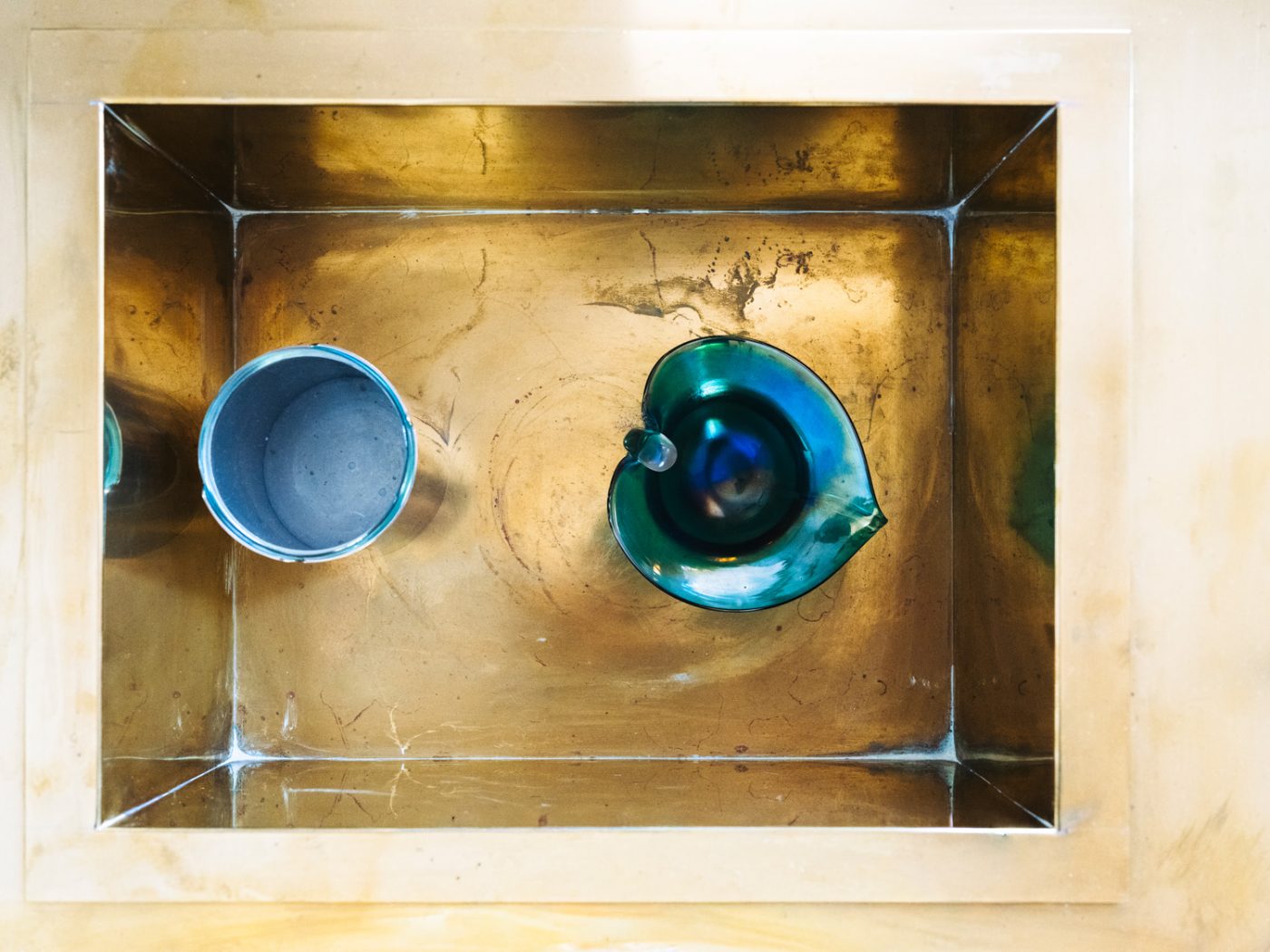
There’s often an education piece that antiques dealers take on, especially for private clients.
Absolutely, there’s a story aspect to this: I had this old Martini sign, the kind that you find in bars, and I had this whole negotiation with someone on the street outside his bar in Naples, trying to buy it.
I do think that where a piece was found, how it was used — that can really add to the interest. In the descriptions of things online, I always make sure to share where a piece was found. That’s the starting point, then I go on to describe it.
There are quite a few pieces that have come from wedding chests that never get opened and used, and the items come out, and they’re still in the original tissue, with the notes from the guests in the nineteen sixties. I had an amazing Richard Ginori coffee service, which I think was nineteen thirties, that came just like that.
There were these great Venini lights from this hospital that was shutting down here in Florence. The builders sold them to me. They were about to throw them out! I think I was passing by. I am one of those people who stops my car and drives up the street you’re not supposed to and has a rummage.
I went recently to some garages outside of Florence where there are a couple of old men who have some things they simply won’t sell. They were amazed that I was selling what I am. “No. What are you doing? You’ve got to keep it!”
One of them has — and I’ve got a couple myself — these amazing nineteen-forties soda fountains that usually have the name of the bar they were in, something in Modena or Bologna, in pink or blue or those other colors of glass you don’t see today. And he has hundreds of them, and en masse they look even more amazing.
I said, “Please, please, please, will you sell them to me?” And this gentleman probably needs some cash, but there was no way he was going to. In the end, I only managed to convince him to sell me a few. But I did get these amazing original Dolce Vita and Roman Holiday movie posters he had, too. It definitely helps that my Italian has gotten better over the years.
Where do you think your journey will take you next — anything you’re particularly after?
Since moving to Florence, I’ve spent a lot of time in Tuscany, and when I was in Umbria, I was always in Rome or a bit south of there. Last year was definitely about getting the bottega here off the ground. Now, I want to get out on the road again, to go south of Naples and really have a look, and do some more buying in Sicily, too.
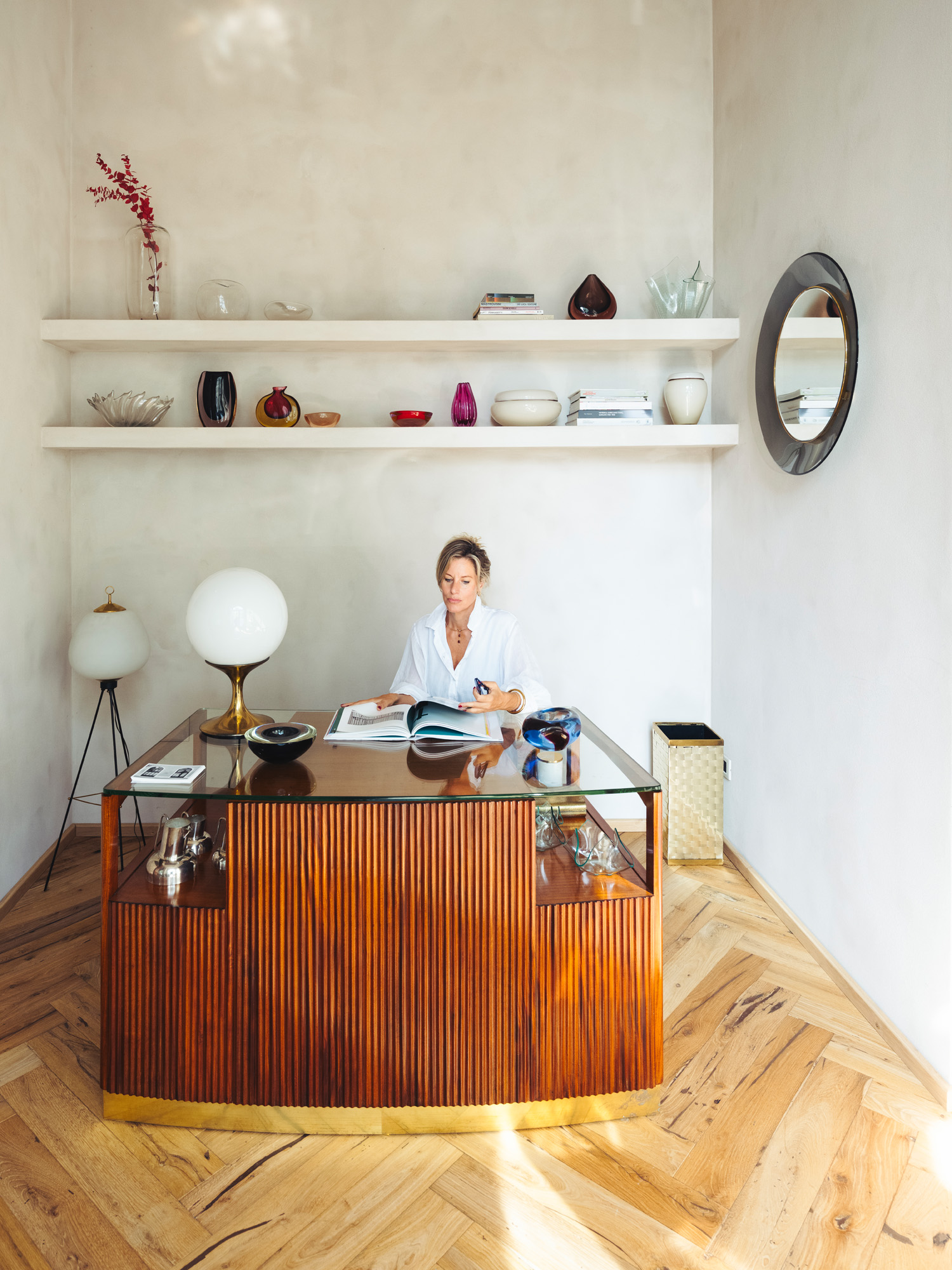
What do you think you’ll find there?
I don’t know, I just don’t. Whenever I go on one of these sourcing trips, I say, “What we really need now is chandeliers,” as an example, and then we leave looking for chandeliers. And we invariably never find the chandeliers, but I come back with some other amazing pieces instead. The trick in this game is looking for beauty and not looking for an item, a category. It doesn’t quite seem to work like that. I slightly wish it did, but it doesn’t.
That’s probably pretty good advice for anyone acquiring and collecting.
I think so. And this is more of an American expression than a British one, but I find myself looking for that “full-body yes.” If you’re really feeling it, you’ve got to buy it then and there. Good antiques, they go quickly, so you’ve got to listen to that emotion.

